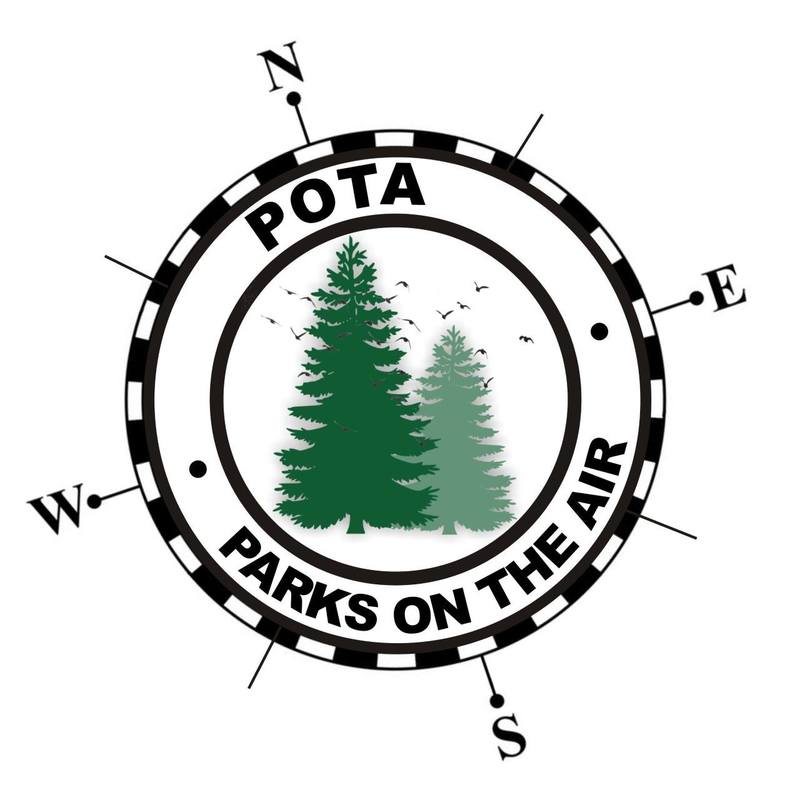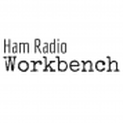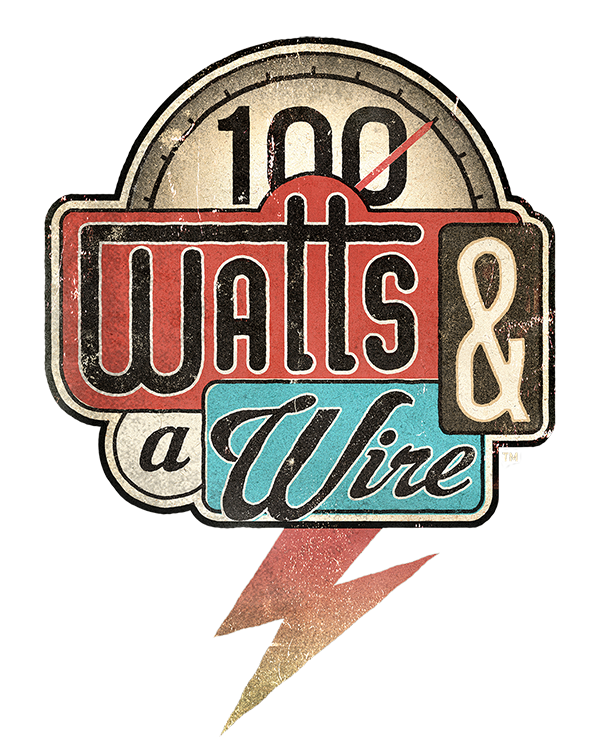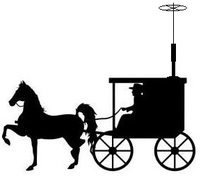It only took her a couple tries to get through (with 1 false start), but she did it! It just so happened that one of the other folks I've been working with on the new QSO storage system, Thom W8TAM, happened to be recording and shared the audio with the POTA Slack group! I highly recommend you join us over there if you're at all interested in POTA - it's an awesome communication tool to share ideas, gear pics, spots, etc. that is WAY more useful than Facebook (although we are there too if that's what you're into.) Anyway, for anyone who isn't on Slack, or doesn't want to join, here's the audio from my daughter's contact with K0ATZ:
While you're here I do want to mention a couple new and exciting developments with POTA. Firstly, as I mentioned, we have been using Slack for communication. It's a great way to chat about our common interest without all the baggage that Facebook can bring. It's also "real time" like Twitter, so it makes a fun place to chat with other activators and hunters while chasing parks. Also, it is "channelized" and you can set up neat notifications by channel. As an example, I have mine set to only "ding" me when spots get posted in the potaspots channel...how cool is that?! Here's a bit of a sneak peak of the chatter when my daughter made the above contact:
Anyway, it's been a fun week. We had the announcement that the new POTA program is now accepting logs from all activators, there are 2 leaderboards up on the website so you can track your progress (one for Activators and one for Hunters), and there is a spotting system that, when used alongside the Slack app, can let you know when you need to run to your rig to work the next park, and I'm within 8 days of finishing my Information Systems degree! The full scoop on all the parks stuff can be learned by starting at www.parksontheair.com.
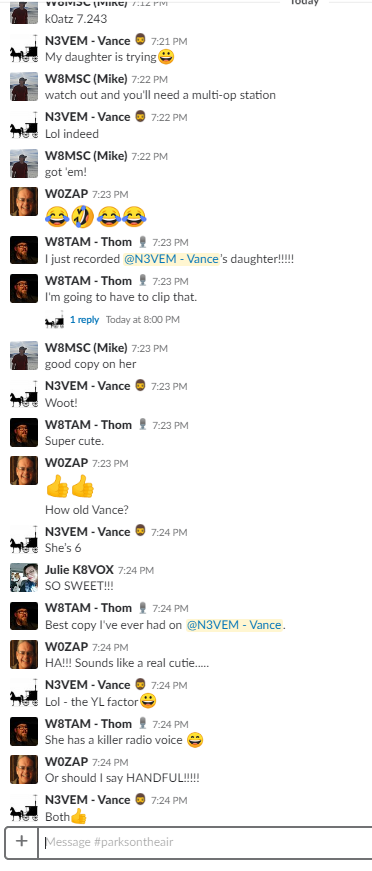

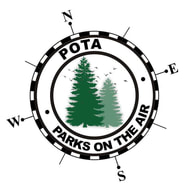
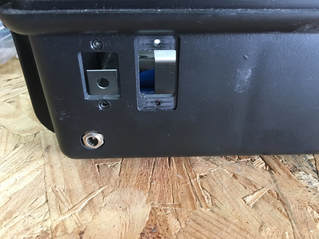

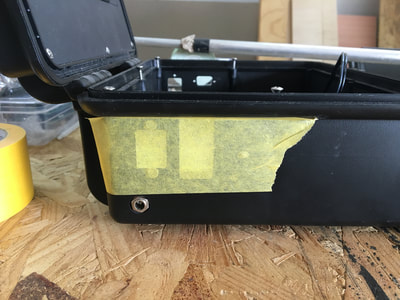
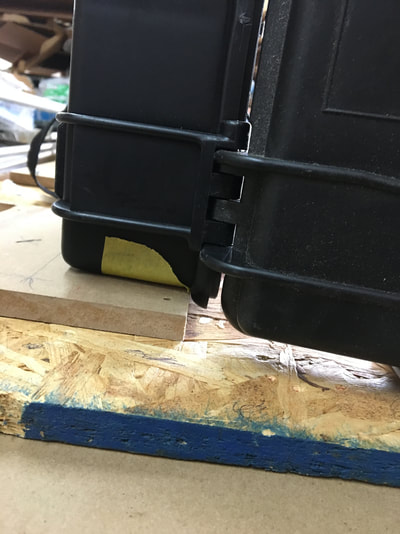
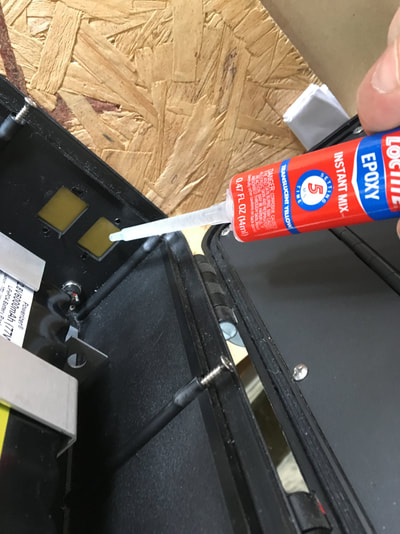
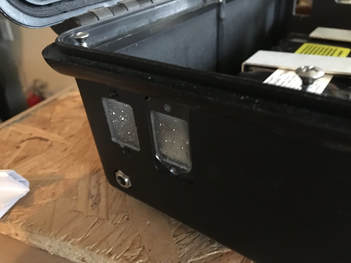
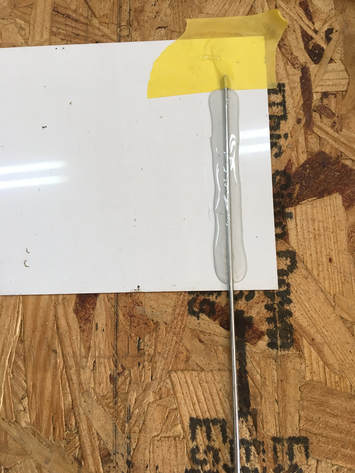
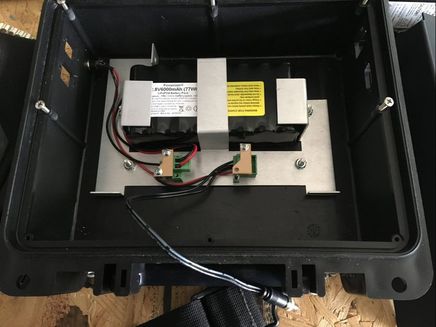
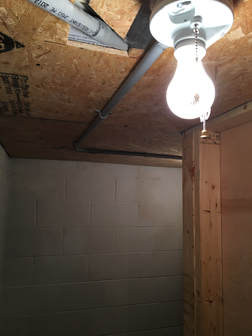
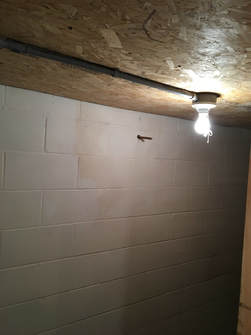
 RSS Feed
RSS Feed
